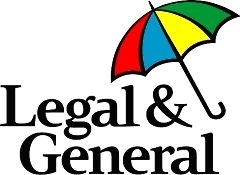There has been quite a bit of ink used recently discussing trademarks and their enforcement and the folks at BRAIN wanted me to write about the topic generally. I want to make it clear that nothing written in this column is meant to comment upon or pass judgment upon recent issues in the news. We are not privy to all the non-public facts; this is just a general legal overview of the subject.
As most people should know there are three areas of “Intellectual Property” (“IP”) in the U.S.: Patents, Copyrights and Trademarks. Patents cover inventions of things and processes. Copyrights cover things such as written materials (like owners manuals) music, films and photos. Trademarks are most a associated with brand names, words, phrases, designs, logos, images or a combination of all the foregoing. It is possible that one thing could be covered in different ways but all three areas of IP law.
There are a few flavors of trademarks. One is a Service Mark (SM), used to designate a service. There are also “common law” trademarks (discussed below) usually designated with a TM and then Federally Registered trademarks denoted with a ®. There are also state-registered marks, which will not be discussed here.
Unlike patents or copyrights, which have limited lifetimes, trademarks can last forever as long as the “mark” is still being used in commerce.
The rationale behind trademarks is that consumers should not be confused about brands or names of products. Once a company had built up a particular brand or product name there is often a great deal of cost behind that and companies don’t want “impostor” products or brands coming out that act as “free riders” and benefit from all the marketing, branding and consumer goodwill that the trademark holder has put into that trademark. Also the trademark office does not want a consumer to think he is getting the brand name product when he is not. He is getting something that only looks like the genuine article. That causes confusion and does not assist consumers in selecting products or services.
 Here is a recent example from the insurance industry. Travelers Ins. is suing Legal & General Group PLC of London over the use of a multicolored umbrella (used since 2011) that Travelers says is too similar to its own iconic red umbrella logo. Even though the umbrella (shown above right) is not red, Travelers feels that the use of any umbrella logo in the insurance industry would “dilute” the famous red umbrella mark (shown on the left). The umbrella is also used to convey “coverage” from harm or the elements (like insurance provides, so it’s a great memorable logo).
Here is a recent example from the insurance industry. Travelers Ins. is suing Legal & General Group PLC of London over the use of a multicolored umbrella (used since 2011) that Travelers says is too similar to its own iconic red umbrella logo. Even though the umbrella (shown above right) is not red, Travelers feels that the use of any umbrella logo in the insurance industry would “dilute” the famous red umbrella mark (shown on the left). The umbrella is also used to convey “coverage” from harm or the elements (like insurance provides, so it’s a great memorable logo).
So in line with this theme rules have been developed to determine when one trademark is too “similar” to another (registered or non-registered mark) in terms of the way the word itself, the way the word is printed, or a logo, or its coloring or its descriptive characteristics or the goods and services categories that go along with each trademark. For example using the logo example above if you have a bicycle goods trademark that uses an umbrella there is not much chance of consumers becoming confused as Travelers is not in the bike business. But if Travelers starts selling bikes using the umbrella logo and you are already using that, now there is a problem (unless they reserved the use of the trademark for bike parts as well) Problems crop up when a trademark owner starts to branch out into “goods and services” categories beyond which its trademark was originally registered for.
In addition to the issue of narrowing or expanding the scope when filing for trademark protection there is also the issue of where to file the trademark. You only get the protection the in the country you file in. There is a system in place now to make one filing cover about 100 countries that agree to follow the protocol or system referred to generally as the “Madrid System” (actually there are two international treaties). The U.S. and the EU joined the protocol in 2000. The problem of course is that as you make the trademark apply to a broader class of goods and services (obviously within the scope of your business’s products or services) and to more countries the more likely it is that the trademark will be denied due to some conflict with another. I had heard that “Nike” dropped the use of the word Nike and just went with the “swoosh” symbol as that was well recognized and due to the fact that some rogue distributor had picked up the trademark “Nike” in some non-EU country. But they failed to get the “swoosh.”
Within the U.S. there are also registration issues. In order to obtain a U.S. Federal Registration on a trademark the good or service must be sold or offered for sale in every state. If it's not, that technically is a bar to a federal registration and you have to obtain state law registrations, which is really a whole other system, not unified, like the federal system.
Another issue to think about is who or what entity is going to own the trademark. Normally trademarks and other intellectual property are owned by or “assigned to” a legal entity such as a corporation. In some cases corporations are formed just to own all the IP that a company or group of companies may have. Having individuals own IP is a very risky strategy obviously due to control issues.
The enforcement of trademarks is of course a subject for which books are written. One of the biggest issues for trademark owners is the failure to continue to use the mark in commerce. If the mark falls out of use for a period of longer than five years (in most cases) it can lapse for non-use (abandonment) or of course be challenged by another seeking to use the mark.
Trademarks can also become “generic” through common use and this can result in the loss of registration. For example Xerox does not want people referring to all photocopies generically as a “Xerox” especially if it’s not made on Xerox machine.
“Fair use” is also a very misunderstood concept in trademark. For example you can always use a trademark when saying something negative about the brand or company (that is truthful of course) or comparing it to another brand. This would be considered fair use and of course free speech under the First Amendment to the U.S. Constitution.
Internet domain names are another tricky subject. Typically once you have a registered trademark ensuring that no one else can use that trademark in a domain is relatively easy in straightforward cases but becomes much more convoluted in other trickier issues that don’t just involve a simple domain. For example all the www.yourcompanysucks.com domains have been held to have a right under the First Amendment to exist. Also, what happens with meta tags of your trademark in a competitor's website. Again the specifics facts of the cases control but infringement of the trademark is generally not found where the domain owner does not seek to capitalize on the trademark's goodwill for his own commercial enterprises. For example if the domain owner is legitimately comparing Fords to Chevys in the article ,there would not be an infringement if the main purpose of the site was the comparison, not selling those brands. Most internet domain disputes are now dealt with worldwide under the Uniform Domain Name Dispute Resolution Policy with www.icann.org.
In most countries including the U.S. you can license the trademark to third parties. The downside of course is that the trademark owner must closely monitor the quality of the goods produced by the third part licensee to avoid the risk of abandonment of the trademark or worse product liability ramification to the licensor if someone is injured with the product produced by the third party. These aspects are usually specifically dealt with in licensing agreements.
Some countries, like the U.S. do have certain protections provided to unregistered trademarks often denoted with the TM mark. These rights in the U.S. are geographical in nature, so multiple parties may use the trademark simultaneously. Unregistered marks may be protected under the Federal Lanham Act against commercial misrepresentation of the source or origin of goods.
But typically, in order to gain an advantage and to insure stability and predictability, users will opt to register a mark federally. This also brings greater damages for infringement than from a non-registered mark. Also it’s rare for an unregistered trademark to be successfully licensed to a third party. In addition a registered trademark owners can use the trademark to stop the importation of imported products that violate the trademark through U.S. Customs. Also when in court you have a higher burden of proof to prove the mark is yours and unique. A registered owner does not. There are also fewer geographical restrictions to deal with in a registered trademark. Even if your mark is unregistered you should always denote TM next to the mark so that others will know you are asserting that as your trademark and that cannot be used as a defense by the infringer. However, the burden to search the federal trademark database rests with each company that is seeking to find a trademark, as they may be liable for infringement even if they later discovered the owner did not mark its products with the ® mark.
Trademarks should not be an afterthought. They need to be well thought out far in advance of creating any brand name or model name of product. It will help insure many fewer headaches down the road and perhaps save thousands of dollars marketing a name that owned by another company. Worse, the confusion that is caused with customers may not work to your advantage.
Steven W. Hansen is an attorney who represents product manufacturers, distributors and retailers in product liability and other lawsuits and provides consultation on all matters related to the manufacture and distribution of consumer products. For further questions visit www.swhlaw.com or send an e mail to legal.inquiry@swhlaw.com
The information in this column is subject to change and may not be applicable in your state or country. It is intended as a thought provoking discussion of general legal principles and does not constitute legal advice. Any opinions expressed herein are solely those of the author.




